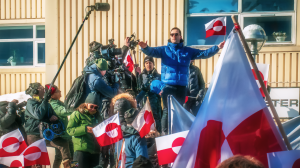Long-term care is expensive in the United States. With Medicaid spending cuts looming and the Trump administration’s deportation plans threatening the caregiving workforce, the system is under even more pressure. On today’s show, Allison Hoffman, health law expert at the University of Pennsylvania’s Carey Law School, joins Kimberly to unpack why the caregiving industry suffers from chronic labor shortages and how the U.S. could finance long-term care differently to make it more affordable.
Here’s everything we talked about today:
- "What Role Do Immigrants Play in The Direct Long-Term Care Workforce?" from KFF
- "Trump’s deportation plans threaten 400,000 direct care jobs: Older adults and people with disabilities could lose vital in-home support" from Economic Policy Institute
- "A brief history of Medicaid and America’s long struggle to establish a health care safety net" from The Conversation
- "The age-old problem of long-term care" from MIT News
- "Solving the Home Care Quandary" from The New York Times
Join us tomorrow for “Economics on Tap.” The YouTube livestream starts at 3:30 p.m. Pacific time, 6:30 p.m. Eastern.

